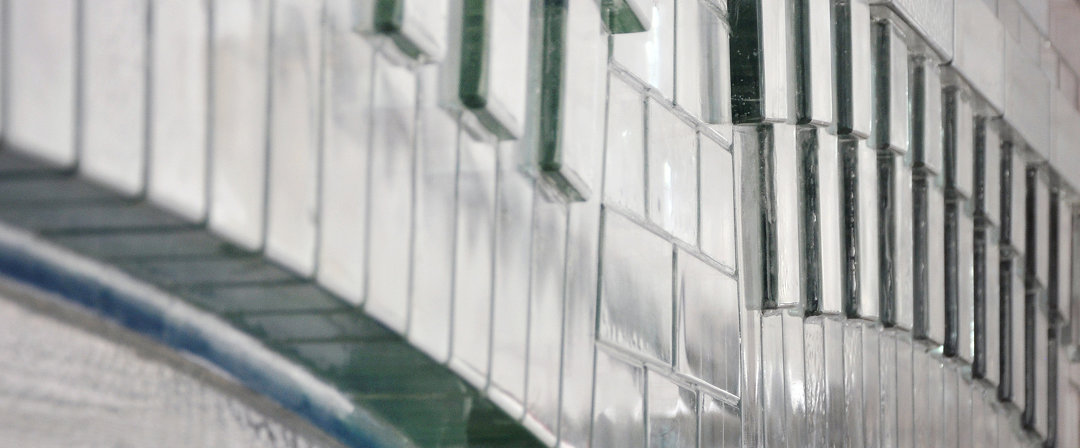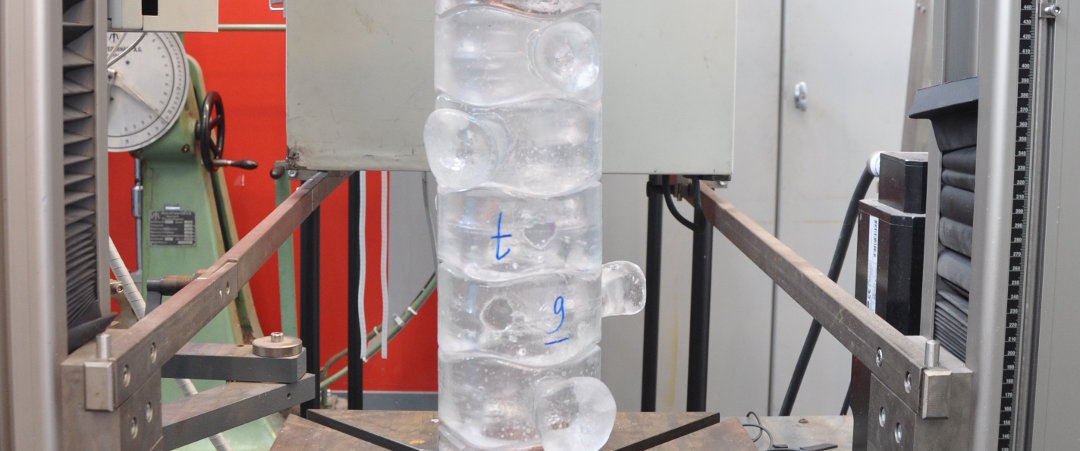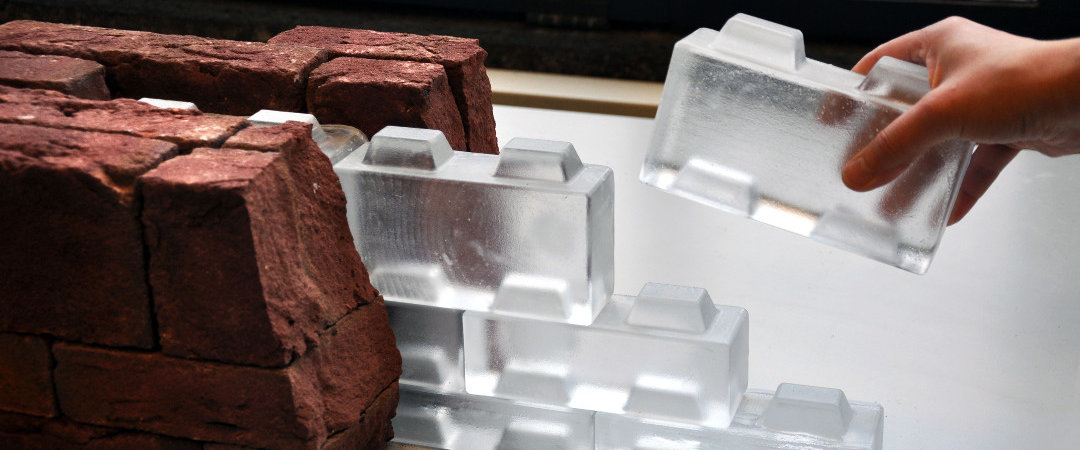Research topics
Cast Glass Components and Structures
It is only in the last decades that the structural potential of glass has started to unveil. Combining transparency with a high compressive strength, glass enables us to make diaphanous load-bearing compressive members, from beams and columns to free-standing facades and entire glass structures. Although glass’ fabrication boundaries have been continuously stretching, so far, glass structures are still confined to the shapes and dimensions that can be realized by the virtually flat elements fabricated by the float industry. Moreover, despite the fact that glass is fully recyclable, the majority of glass objects are neither reused nor recycled, mainly due to contamination from coatings and adhesives.Cast glass can escape the design limitations generated from the 2-dimensional nature of float glass. By pouring molten glass into moulds, solid 3-dimensional glass components can be obtained of virtually any shape and cross-section.
Owing to their large cross-sectional area and monolithic nature, such components can form repetitive units for the construction of 3-dimensional, free-form glass structures that do not buckle due to slender proportions, taking full advantage of glass’s high compressive strength and sparing the necessity of an additional supporting structure. The Crystal Houses façade in Amsterdam, designed by MVRDV and developed by the TU Delft Glass & Transparency group, forms the current state-of-the-art in the field of architectural cast glass. The cast block façade, bonded by a rigid, colourless adhesive of virtually zero thickness, manifests the potential of cast glass in architecture but also points out the engineering challenges resulting from a permanent construction of extreme accuracy and intensive and meticulous labour.

Glass Columns and Struts
We have been able to transform all structural elements of a building into an all glass one. One element resists our efforts: the load bearing column. We are studying and working on how to make an all glass column, safe, redundant and strong enough to carry an ambitious high rise building. Biggest challenges are how to transport the load of the building in the all glass column and how to get the load from the all glass column to the foundation. Safety is provided when a madman with a sledgehammer cannot achieve collapse in one minute hammering.

Glass Strength & Composition
Glass is a recyclable, homogeneous and transparent material which can be molded into any shape. It is this, attractive combination of properties, that allows glass to be so commonly used in daily life. From construction materials to the display on smartphones, glass has a variety of possible applications. As a result, glass must be versatile and fulfil many different demands.
One of the biggest demands is strength. The concern of breakage is on the top of the reasons of aversion for glass using. For these reasons studies are required, in order to understand the mechanical properties of the glass and to determine the effects of the chemical composition on it.
We develop innovative glass recipes and measure some of their mechanical properties, like elastic modulus and hardness. Furthermore, thermal and structural properties are also determined, using characterization techniques such as X-ray diffraction, thermal gravimetric analysis and nanoindentation.
Later the variation of these properties is correlated with the composition; determining the quantitative relation of each constituent element and its contribution in the final properties of the glass. The results work as a guideline to design glassy materials, satisfying requirements and predicting their properties.
